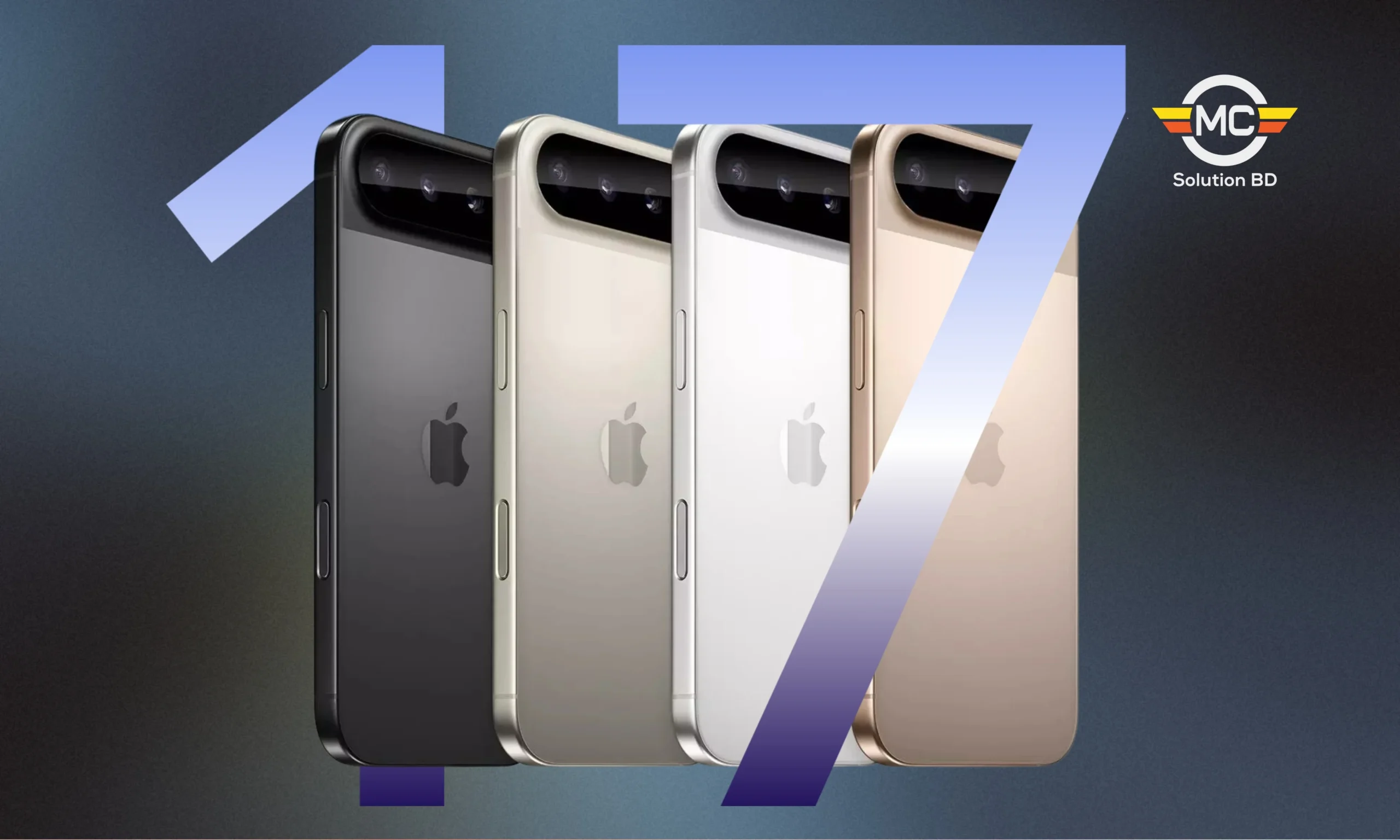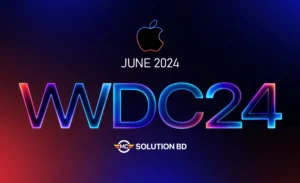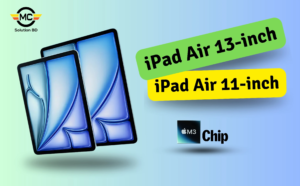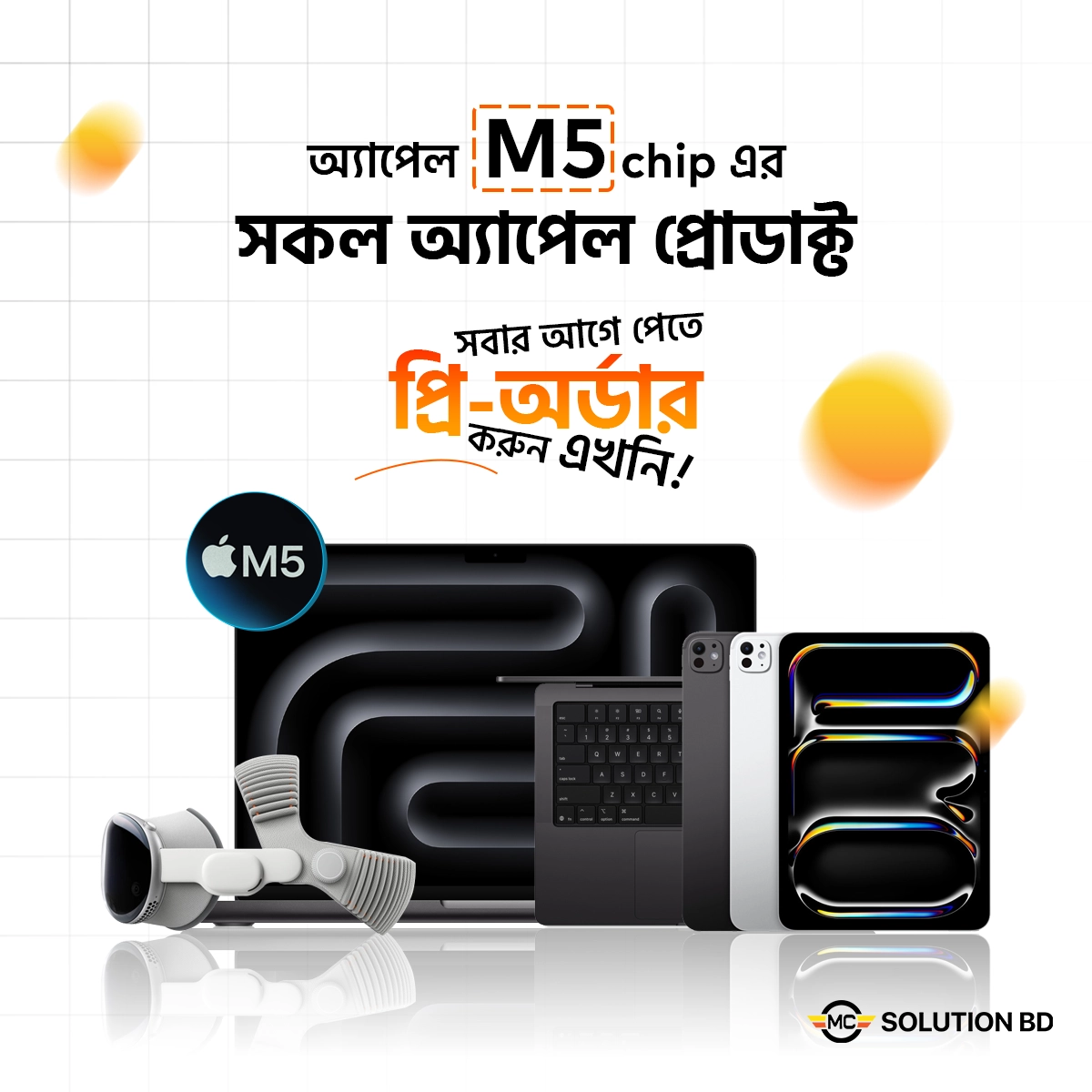iPhone 17 Series Rumors – What We Know So Far
Even before the iPhone 16 launches, details about the 2025 iPhone 17 lineup are already creating major buzz. If the leaks hold true, Apple is preparing one of the most dramatic design overhauls since the iPhone X in 2017.
Entirely New Lineup: iPhone 17, Pro, Pro Max & the “Air”
Apple is planning to release four models in 2025:
- iPhone 17
- iPhone 17 Pro
- iPhone 17 Pro Max
- iPhone 17 Air (new addition)
Notably, Apple is expected to drop the iPhone 17 Plus due to low demand. Instead, the new iPhone 17 Air will fill that pricing and design gap—but with a twist.
Introducing the iPhone 17 “Air”
Inspired by the iPad Air and MacBook Air, the iPhone 17 Air will be thinner and more compact:
- Estimated display: 6.6 inches
- Thickness: 6mm or less
- Positioned as a mid-tier device, priced between the base iPhone 17 and the iPhone 17 Pro
Despite early speculation, it won’t be more expensive than the Pro Max—it’ll serve as a sleek alternative for users seeking both performance and portability.
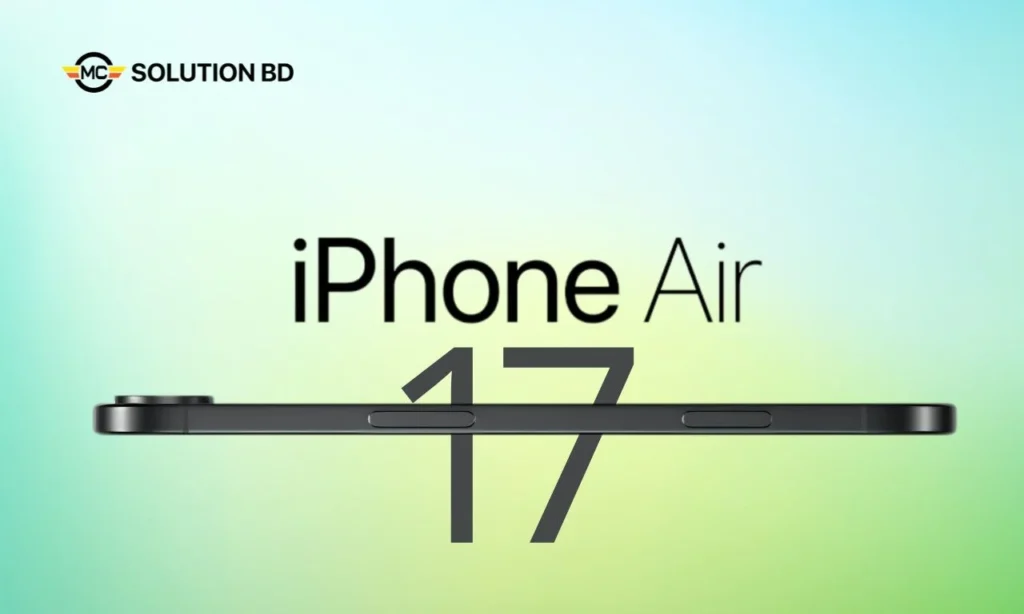
Display Sizes Across the Lineup
Here’s how the display sizes are expected to stack up:
Model | Display Size |
iPhone 17 | 6.3 inches (up from 6.1″) |
iPhone 17 Air | ~6.6 inches |
iPhone 17 Pro | 6.3 inches |
iPhone 17 Pro Max | 6.9 inches |
This positions the iPhone 17 Air perfectly between the Pro and Pro Max in size.
Goodbye to 60Hz: All Models to Get 120Hz ProMotion
For the first time, every iPhone 17 model will feature:
- ProMotion technology (120Hz refresh rate)
- LTPO OLED displays enabling smoother visuals
- Possibility of Always-On Display—though it may remain exclusive to Pro models
New Materials and Build Quality
Apple might be experimenting with build materials:
- Pro models could swap titanium for aluminium.
- Expect a hybrid glass-aluminum exterior for improved durability
- MagSafe charging support will remain intact
- A new horizontal camera bump may replace the iconic square design on several models
Camera Upgrades Across the Board
Each model is expected to feature new or improved cameras:
- iPhone 17 Air: Single-lens 48MP rear camera
- iPhone 17 Pro Max: Upgraded 48MP Telephoto lens
- iPhone 17 Pro: Likely gains the new 24MP front camera with a 6-element lens
- Standard iPhone 17: Retains dual-lens Wide and Ultra Wide setup
In-House Chips and Wi-Fi Upgrades
Apple is making serious hardware shifts:
- iPhone 17 Air may include a custom-designed Wi-Fi 7 chip, ditching Broadcom
- Apple’s own 5G modem chip might also debut in this model
Other models may continue using Qualcomm for connectivity
Sleek Design Shifts: Goodbye Plus, Hello Air
Apple is retiring the iPhone “Plus” model for 2025 due to consistently weak sales. Replacing it is the all-new iPhone 17 Air, joining the lineup with:
- iPhone 17
- iPhone 17 Pro
- iPhone 17 Pro Max
The standard iPhone 17 will see minimal design changes and is expected to closely resemble the iPhone 16, continuing Apple’s tradition of saving big innovations for its premium models.
Display Sizes Across the Board: What’s Changing
The iPhone 17 lineup is seeing a modest shake-up in size:
- iPhone 17: 6.3 inches (up from 6.1”)
- iPhone 17 Pro: 6.3 inches
- iPhone 17 Air: 6.6 inches
- iPhone 17 Pro Max: 6.9 inches
This marks the first time the standard model will match the Pro model’s display size, providing users with more screen real estate at a lower price point.
New Camera Bump Designs: Horizontal Bars Incoming
Here’s how camera layouts are evolving:
Model | Camera Design |
iPhone 17 | Dual-lens in pill-shaped bump (vertical) |
iPhone 17 Air | Single-lens in elongated horizontal bump |
iPhone 17 Pro | Triple-lens in wide horizontal bump |
iPhone 17 Pro Max | Same as Pro, with wider spacing for LiDAR and flash |
The horizontal camera bar design on the Air and Pro models is likely to become a visual signature, distinguishing them from the standard model.
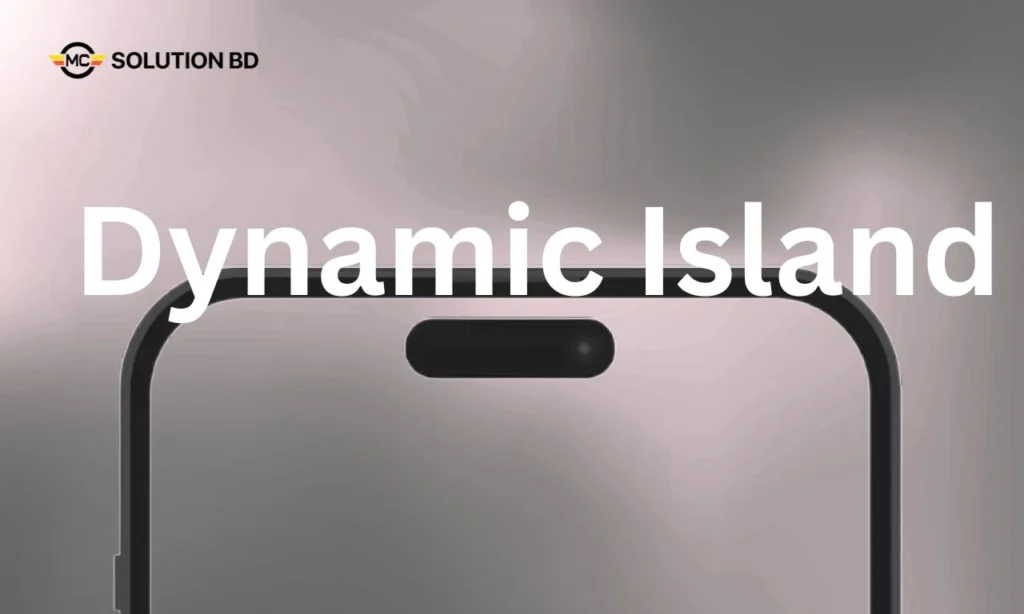
Dynamic Island: Will It Shrink?
There’s some disagreement in the rumor mill:
- Jeff Pu: Believes metalens Face ID tech will allow a smaller Dynamic Island on all models.
- Ming-Chi Kuo: Predicts no major changes, with the same size notch as iPhone 16.
If Pu is right, we might see a cleaner, more modern front display across the lineup.
Spotlight on iPhone 17 Air: Apple’s Thinnest iPhone Yet
Among all the iPhone 17 models, the iPhone 17 Air is shaping up to be the most revolutionary. Internally referred to as “iPhone 17 Slim” by some sources, this ultra-thin device is expected to redefine Apple’s smartphone design language.
Ultra-Thin Profile: Just 5mm–6mm Thick
The iPhone 17 Air could be the thinnest iPhone Apple has ever made, with multiple credible sources offering thickness estimates:
- Mark Gurman (Bloomberg): ~6.25mm (2mm thinner than iPhone 16 Pro)
- Ming-Chi Kuo: ~5.5mm at its thinnest point
- Jeff Pu: Around 6mm
- Dummy units: ~5.5mm
For context, the previous thinnest iPhone—the iPhone 6—measured 6.9mm, making this a substantial leap in engineering.
Redesigned Chassis & Display Size
The display is rumored to fall between 6.55 and 6.65 inches, slotting between:
- iPhone 17 Pro (6.3″)
- iPhone 17 Pro Max (6.9″)
That gives the iPhone 17 Air a “just right” display size that balances usability and portability. At around 145 grams, it will be as light as the iPhone SE 2 or iPhone 13 mini, making it ideal for those who prefer compact phones.
Camera Repositioned to Center
One of the boldest rumored changes: the rear camera may move to the center of the back panel, a rare design move for Apple. Early leaks and dummy models show a large, centered camera bump, departing from Apple’s long-standing corner placement.
Small Hardware Tweaks for a Thin Body
To accommodate such a slim form factor, Apple is reportedly making several design compromises:
- USB-C Port: Shifted closer to the rear (not centered front-to-back)
- Speaker Grilles: Just two holes per side of the port, down from five
- Camera Control Button & Action Button: Still present
- Supports MagSafe charging: Despite the compact profile
These fine adjustments are necessary to maintain Apple’s feature set while slimming down the chassis.
First Look: Dummy Models Confirm Changes
Dummy models—often used by case makers based on supply chain leaks—offer the most tangible look at what’s to come. In video demos, the iPhone 17 Air is shown with:
- A centered camera bump
- Sleek sides
- Thinner bezels
- Slightly relocated ports
This suggests that the Air will not only be the lightest and thinnest but also among the most visually distinct iPhones in years.
iPhone 17 Pro & Pro Max: Major Redesigns in the Works
The iPhone 17 Pro and iPhone 17 Pro Max are set to receive some of the most significant design changes we’ve seen in Apple’s premium phones since the iPhone X.
Frame Material: From Titanium Back to Aluminum
In a surprising move, Apple may ditch titanium and return to aluminium frames for its Pro models—marking the first time a high-end iPhone has used aluminium since the iPhone 7. While titanium brought strength and a premium feel, aluminium offers:
- Lighter weight
- Improved shock absorption
- Lower manufacturing costs
Half-Glass, Half-Aluminum Rear Design
The back of the iPhone 17 Pro and Pro Max will reportedly be a combination of:
- Aluminum (top half)
- Glass (bottom half) to support wireless charging and MagSafe
This hybrid design could increase drop durability while still supporting key features.
Redesigning the Camera Bump: What to Expect
The most visible change may be the larger, rectangular (or pill-shaped) camera module:
- Made from aluminum
- Possibly elongated oval or pill-shaped
- Potential horizontal alignment of lenses
But Wait… Will That Break Spatial Video?
Currently, spatial video recording uses two vertically aligned lenses (Wide + Ultra Wide). A horizontal layout would disrupt this format unless Apple:
- Redesigns its camera tech
- Uses new computational tricks (e.g., Gaussian splitting)
- Or opts not to redesign the camera layout as rumoured.
This technical hurdle introduces doubt about the accuracy of horizontal lens alignment rumours.
Conflicting Rumors: CAD Files vs Renders
- Jon Prosser shared renders of a Pro model with a large horizontal camera bar—claiming it’s based on a real prototype.
- Mark Gurman (Bloomberg) disagreed, stating it was likely a fake CAD leak.
- Case leaks, however, confirm a much larger camera cutout on the Pro models.
Whether it’s an elongated pill, horizontal bar, or a new triangular formation, a major camera layout shift seems imminent.
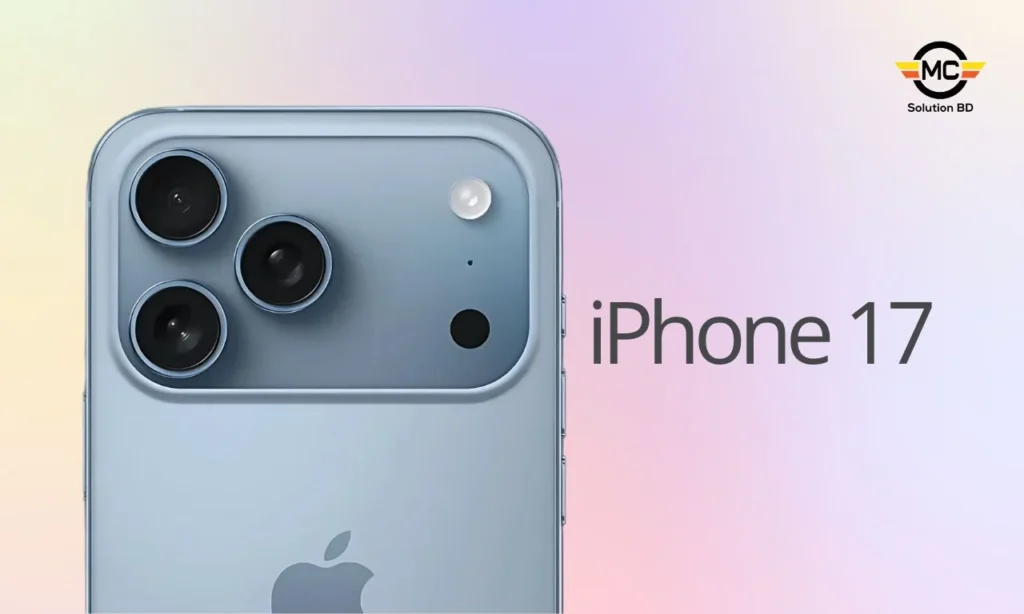
Revolutionary Thermal Upgrades in the iPhone 17
Apple is taking a serious leap in managing heat for its next-gen smartphones. According to several reliable leaks, the iPhone 17 Pro models will feature vapor chamber cooling technology, marking a first for the iPhone lineup.
What is Vapor Chamber Cooling?
Vapor chamber technology works by spreading heat more evenly across a larger area. This innovation helps prevent performance slowdowns caused by overheating—something Apple users have occasionally noticed during intensive gaming or prolonged video editing.
The vapor chamber will likely enhance the performance stability of the new A19 chip, especially under heavy workloads.
Will It Be a Pro-Only Feature?
While initially rumored for the Pro variants, there’s growing speculation that Apple might expand vapor chamber cooling across the entire iPhone 17 lineup, including the iPhone 17 and iPhone 17 Air. If true, that would be a major win for all users—not just Pro customers.
Display Enhancements Set to Impress
Apple’s upcoming iPhone 17 lineup will also see significant upgrades in display technology, aiming to bring Pro-level quality to non-Pro models.
OLED Brightness and Longevity Boost
The iPhone 17 and iPhone 17 Air will adopt OLED panels used in the current iPhone 16 Pro models, sourced from Samsung. These upgraded screens deliver:
- 30% increased brightness
- Improved longevity
- Enhanced visual clarity for outdoor viewing
This update means even the more affordable models will offer a premium viewing experience.
Scrapped Anti-Reflective Coating
Originally, Apple planned to introduce a scratch-resistant, anti-reflective display coating on the Pro models. However, challenges in manufacturing at scale led to the cancellation of this feature—for now. It’s possible it might return in future iterations once the tech becomes more feasible.
ProMotion and Always-On Display for All Models
Since 2021, the 120Hz ProMotion display has been exclusive to Pro iPhones. That’s about to change.
ProMotion Comes to Every iPhone 17
In a move that blurs the line between Pro and non-Pro, Apple is reportedly adding ProMotion support to all iPhone 17 models, including the base and Air variants.
What does ProMotion offer?
- Ultra-smooth scrolling
- Enhanced video playback
- Seamless animations
- Dynamic refresh rates from 1Hz to 120Hz
Thanks to low-temperature polycrystalline oxide (LTPO) technology, these displays balance high refresh performance with power efficiency.
Always-On Display: A Maybe
With all models gaining ProMotion, there’s a strong chance that always-on display functionality might become standard. However, Apple hasn’t confirmed this yet, and it could still remain a Pro-only feature.
A-Series Chip: A19 and Beyond
At the heart of every iPhone lies its A-series chip, and the iPhone 17 lineup will continue the tradition of cutting-edge performance.
A19 Chipset for Next-Level Speed
- iPhone 17 Pro and Pro Max: Expected to feature the A19 Pro chip
- iPhone 17 and iPhone 17 Air: May get the standard A19—or possibly stick with the A18, based on some rumors
Even without the much-anticipated 2nm technology, Apple’s A19 chip—built on TSMC’s refined N3P 3nm process—is poised to offer:
- Greater energy efficiency
- Faster processing
- Higher transistor density
TSMC is set to begin mass production of N3P chips in late 2024, aligning perfectly with the iPhone 17’s release cycle.
Performance Boosts: RAM, Modem, and Custom Connectivity Chips
RAM Upgrades: 12GB Coming to More Models
With the iPhone 17 series, Apple is poised to deliver a serious memory upgrade. The iPhone 17 Pro, Pro Max, and Air models are expected to come with 12GB of RAM, up from the 8GB in the iPhone 16 series.
This increase will mean:
- Better multitasking
- Smoother app switching
- Enhanced performance for advanced photography and video editing
As for the standard iPhone 17, it may stay at 8GB RAM—though if Apple’s supply chain allows, it might be bumped up to 12GB as well.
Apple’s First 5G Modem Debuts in the iPhone 17 Air
Another milestone for Apple is the debut of its in-house 5G modem, which will first appear in the iPhone 17 Air.
Unlike current Qualcomm modems, Apple’s chip supports up to 4Gb/s download speeds, though it lacks support for ultra-fast mmWave 5G. Instead, it’ll operate exclusively on sub-6GHz 5G, which still delivers solid coverage and speed.
The rest of the iPhone 17 lineup will continue using Qualcomm’s latest 5G modems.
Connectivity and Structural Design Changes
SIM Tray Removal Expands Globally
Starting with the iPhone 14 in the U.S., Apple began removing physical SIM trays in favor of eSIM. Now, with the iPhone 17, Apple is expanding this move to more international markets.
While the specific countries haven’t been disclosed yet, it’s confirmed that the iPhone 17 Air will not have a SIM tray at all, likely due to its ultra-thin design.
Apple’s First Custom Wi-Fi Chip with Wi-Fi 7
For the first time, all iPhone 17 models will feature Apple-designed Wi-Fi chips, supporting the cutting-edge Wi-Fi 7 standard. Benefits include:
- Multi-band support (2.4GHz, 5GHz, and 6GHz simultaneously)
- Speeds over 40Gb/s
- Lower latency and better reliability for real-time applications
This Wi-Fi chip also marks a major step toward Apple’s long-term goal of integrating all wireless radios (Wi-Fi, Bluetooth, and 5G) into a single SoC, improving battery efficiency and reducing hardware space.
Bluetooth 5.3 Support
All iPhone 17 models are expected to support Bluetooth 5.3, offering improved reliability, range, and power efficiency.
Battery, Charging, and Sustainability
Easier Battery Replacement
In a nod to repairability and sustainability, all iPhone 17 models may include easier-to-remove batteries using low-voltage adhesive strips. This tech debuted in the iPhone 16 and 16 Plus, but Pro models retained traditional adhesives.
If rolled out across the board, this will make DIY and third-party battery replacements far simpler, especially in countries with right-to-repair legislation.
Charging Speed and Standards
- Wired Charging: Up to 35W (same as iPhone 16 series)
- Wireless Charging: Expected support for Qi 2.2, which allows for speeds up to 50W
Though Apple may not allow full 50W wireless charging, this future-proofing ensures compatibility with faster chargers down the line.
Camera Upgrades Across the Board
Front Camera: 24MP for All
Say goodbye to grainy selfies—all iPhone 17 models will upgrade to a 24MP front-facing camera, doubling the resolution from previous generations. This will result in:
- Sharper images
- Improved video call clarity
- More flexible cropping for social media posts
Rear Camera System: A Major Leap
Here’s what each model gets in 2025:
Model | Camera Specs |
iPhone 17 Air | Single-lens 48MP rear camera |
iPhone 17 | Dual-lens system: 48MP Wide + Ultra Wide |
iPhone 17 Pro | 48MP Wide, 48MP Ultra Wide, 48MP Telephoto (Tetraprism) |
iPhone 17 Pro Max | Same triple 48MP setup, with 8K video support |
Pro Models Highlights:
- First iPhones to offer three 48MP cameras
- Support for 8K video recording
- 5x Telephoto zoom remains exclusive to Pro variants
- Rumored mechanical (variable) aperture, allowing pro-level control over depth of field
- Potential dual video recording (front and rear simultaneously)—a dream feature for vloggers and content creators
Non-Pro models, however, won’t have Telephoto lenses or the 5x optical zoom capabilities.
iPhone 17 Pricing and Launch Timeline
Expected Price Points
Apple is positioning the iPhone 17 lineup strategically across several price tiers. Here’s what we’re hearing from the rumor mill:
Model | Expected Starting Price |
iPhone 17 | $799 |
iPhone 17 Air | $899 |
iPhone 17 Pro | $999 |
The iPhone 17 Air will sit between the standard and Pro models, offering a balanced combination of premium features and value. While these prices reflect Apple’s current trends, analysts suggest a possible price hike due to rising component costs and international tariffs.
Instead of citing tariffs directly, Apple is expected to justify any price increases through innovation, highlighting new features, materials, and design upgrades.
iPhone 17 Release Date
The iPhone 17 is scheduled to launch in September 2025, following Apple’s traditional release cycle. The models are currently advancing through Apple’s rigorous development stages:
- EVT (Engineering Validation Testing) – Completed
- DVT (Design Validation Testing) – Ongoing
- PVT (Production Validation Testing) – Upcoming
These phases ensure that everything from performance to reliability is on point before mass production begins. By completing EVT, Apple signals that the design is nearly finalised, with only small internal tweaks expected.
What’s After the iPhone 17? Future Innovations Coming in 2026–2027
Split iPhone Launches
Starting in 2026, Apple will change its annual iPhone launch pattern:
- Fall 2026: iPhone 18 Air, Pro, Pro Max + Foldable iPhone
- Spring 2027: Standard iPhone 18 and iPhone 18e
iPhone 18: Key Leaks
- Under-display Face ID for a cleaner front design
- Smaller camera cutout, possibly in the top-left corner
- A20 chip (2nm process): Faster and more energy-efficient than the A19
- C2 modem chip: With mmWave support, lower power usage, and higher speeds
- Variable aperture camera: DSLR-like performance with improved depth-of-field control
Apple’s First Foldable iPhone
Apple is expected to debut a foldable iPhone in Fall 2026, launching alongside the iPhone 18 Pro lineup. Features may include:
- “Nearly invisible” crease
- High-quality hinge design
- Compact yet high-performance form factor
Future Camera Milestone: 200MP Sensor
By 2027 or later, Apple may introduce a 200MP main camera, offering unmatched resolution and the ability to crop photos without any noticeable quality loss—mirroring advancements already seen in Samsung’s Galaxy lineup.
Frequently Asked Questions (FAQs)
Q1: What is the iPhone 17 Air and how is it different?
A: The iPhone 17 Air is expected to be a slimmer, more premium alternative to the base iPhone 17. It could feature the same display and chip as the Pro models, but with fewer rear cameras.
Q2: Will the iPhone 17 have better battery life?
A: Battery life could improve slightly thanks to more efficient chips and wireless radios. All models will also be easier to repair due to updated battery adhesives.
Q3: Is the iPhone 17 getting ProMotion and always-on display?
A: Yes, all four iPhone 17 models are expected to support ProMotion with 120Hz refresh rates. Always-on display is a possibility but not confirmed for all models.
Q4: What’s new with the iPhone 17’s camera?
A: The front camera is being upgraded to 24MP across the board, while the Pro Max will feature three 48MP rear cameras and support 8K video recording.
Q5: Will Apple increase iPhone 17 prices?
A: Yes, Apple may increase prices slightly due to tariffs and higher production costs but plans to balance this with substantial feature upgrades.
Q6: When will the foldable iPhone be released?
A: Apple’s first foldable iPhone is rumored for fall 2026, alongside the iPhone 18 Air and Pro models.
Conclusion: The iPhone 17 Ushers in a New Era of Apple Innovation
From cutting-edge thermal cooling to high-performance chips, ProMotion displays for all, and a 24MP selfie revolution, the iPhone 17 lineup is shaping up to be one of Apple’s most ambitious yet.
With a slimmer Air model, potential price shifts, and powerful photography tools on the Pro Max, the iPhone 17 is more than just a yearly refresh—it’s a preview of the future of Apple’s smartphone strategy.
As we edge closer to its September 2025 launch, more details are likely to emerge. One thing’s certain—Apple fans have a lot to look forward to.

